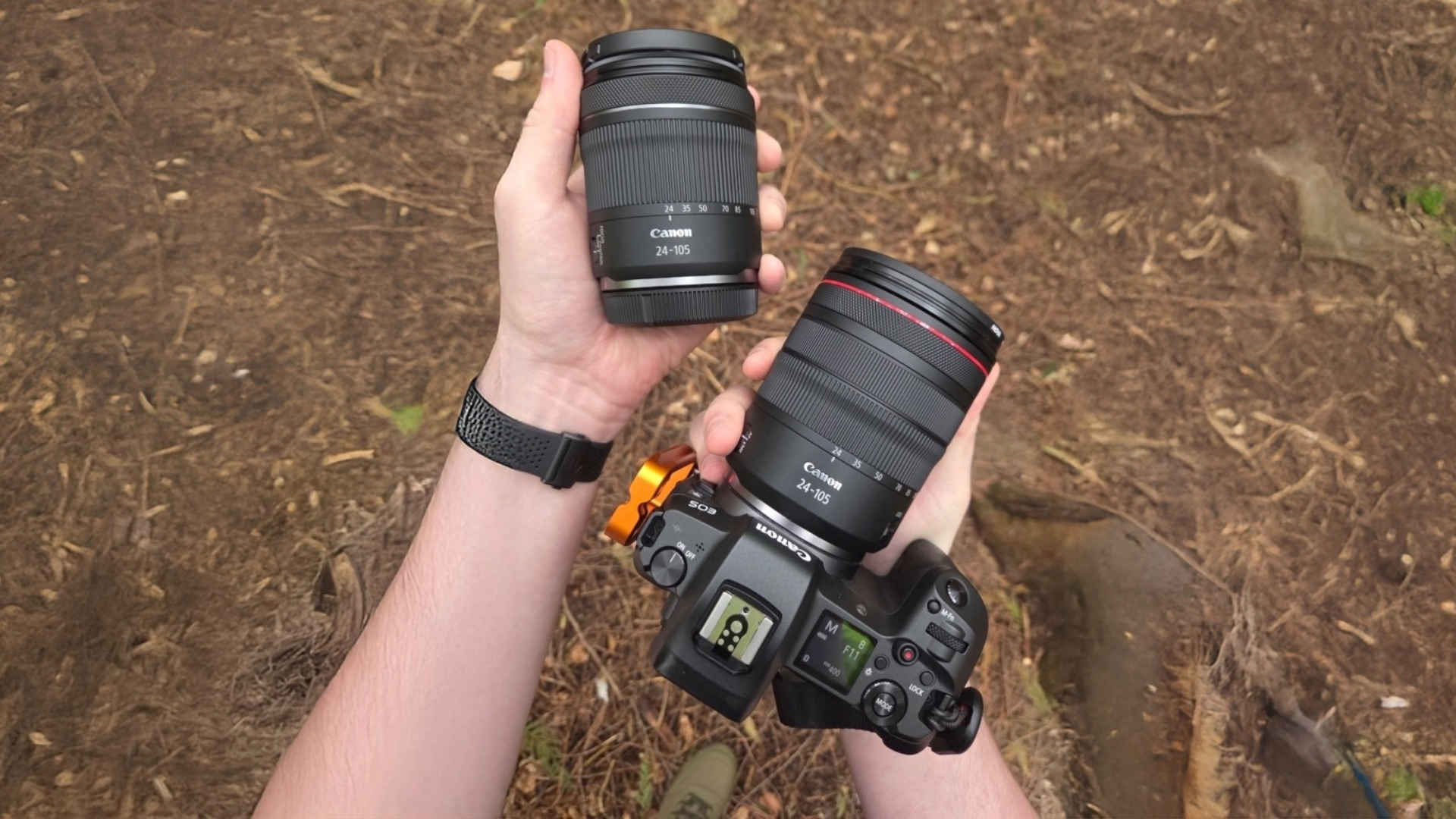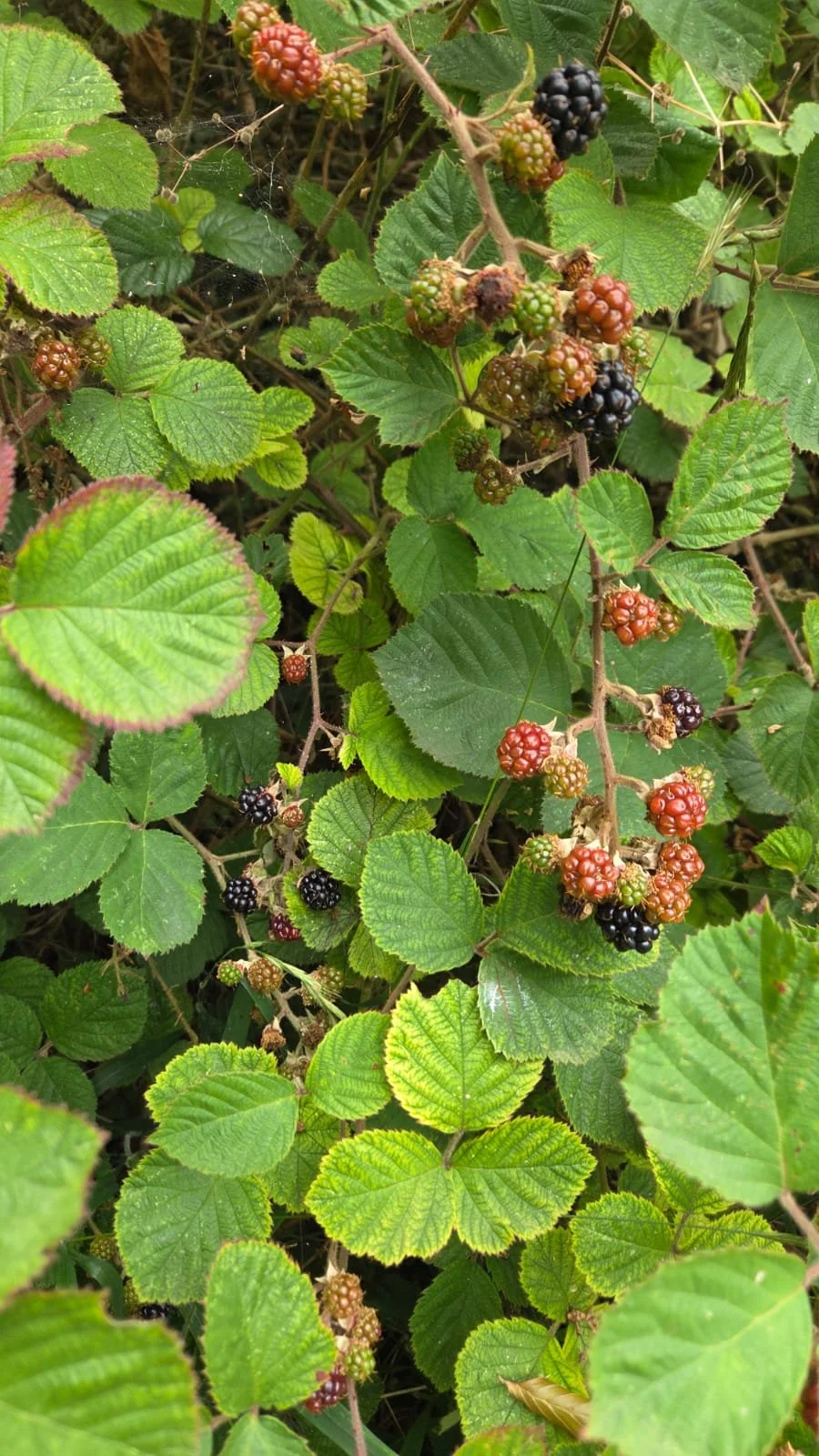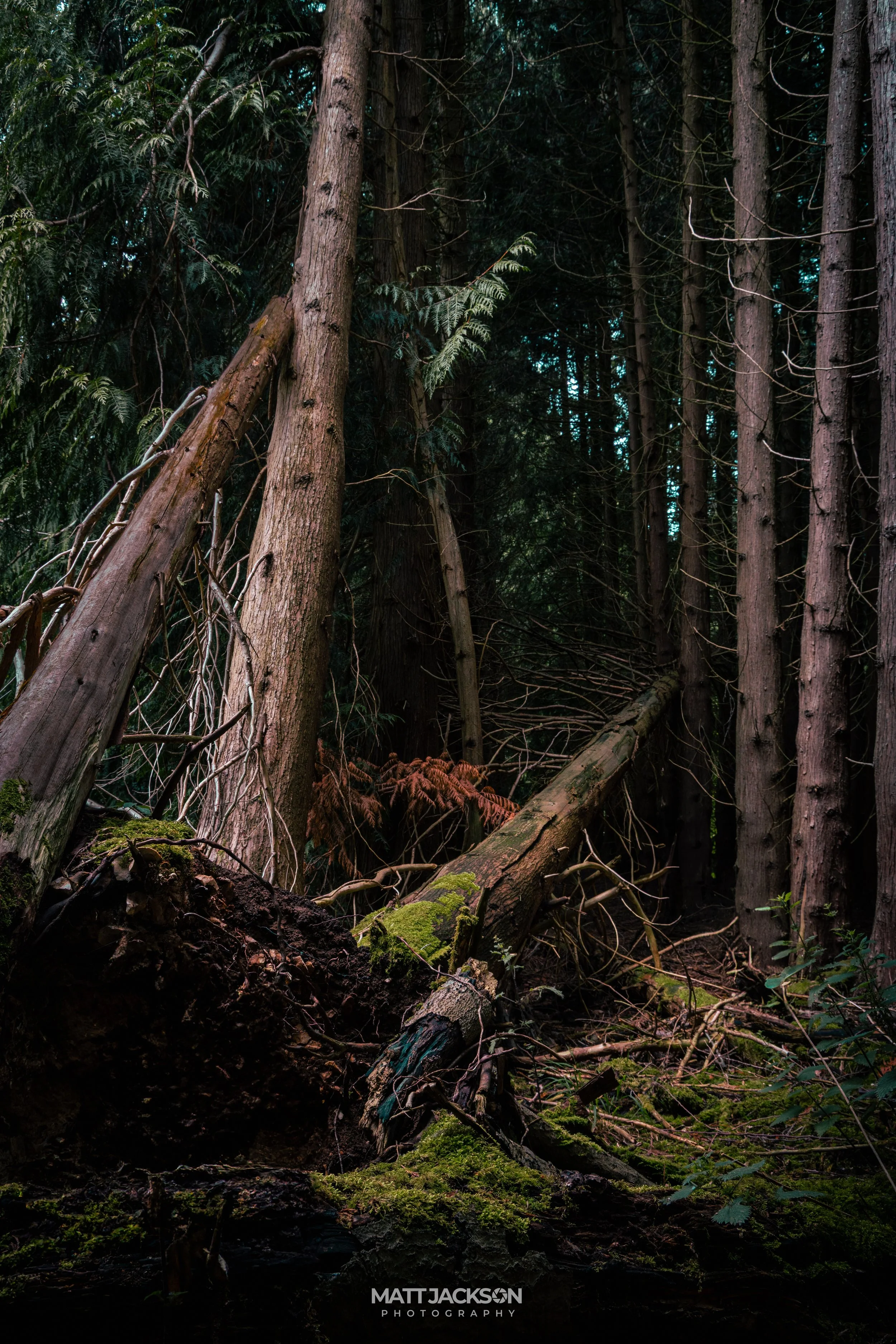Kit vs Pro: The Lens Test That Taught Me More Than I Expected
The Borrowed Lens
It all started with a favour 🤝
A mate lent me his Canon 24–105mm f/4L lens — the pro version of the kit lens I’d been using faithfully for months. Just a test, I said. Nothing serious. I wasn’t planning to buy it, just… curious. A harmless fling with better glass 👀
But I didn’t just throw it on and call it a day. I packed my own lens too — the trusty non-L version — and decided to do something I hadn’t done before: a proper side-by-side field test. Same forest. Same light. Same framing. Two lenses, one honest look in the mirror.
Blackberry Distractions and Forest Light
I took the lenses out to familiar territory — Ashridge Estate, just north of London 🌲 A beautiful spot out in the Chiltern Hills, full of forest trails I’ve wandered a hundred times, camera in hand, caffeine in bloodstream ☕️ (obviously we stopped for coffee — that part’s non-negotiable).
Sabrina came with me, and during the hike down to the spot I’d previously scouted, she suddenly stopped mid-sentence and pointed: “Look at the size of those blackberries!” she said, eyes wide like she’d just seen a wildlife documentary in real life. Not going to lie — they were absolutely massive 😮💨 She was gutted we hadn’t brought any Tupperware. I offered a lens cap but apparently that’s “unsanitary.”
Once we’d made peace with the tragic loss of a potential crumble, we carried on to one of my favourite corners of the woods. The light was soft, the air felt still, and it seemed like the perfect moment to slow down and just enjoy the process. So we did a bit of a relaxed shoot — a few handheld frames for future content, swapping lenses back and forth, chatting about how the colours looked different through each. No pressure. Just play.
The Scene That Changed Everything
As we wandered deeper in, I spotted a scene that stopped me in my tracks.
A fallen tree, thick with moss, cut diagonally through a clearing — like a bridge laid down by nature. Behind it, tall trunks rose vertically like pillars, framing the whole thing like a woodland cathedral. The textures, the layers, the contrast — everything about it felt intentional. Like the forest had arranged itself for this moment.
If there was ever a frame to test two lenses properly, this was it.
I mounted the camera on my tripod, locked everything down, and dialled in the settings. Then I took the same shot twice — once with the kit lens, once with the L. Same framing. Same light. Same position. Nothing moved except my hands as I swapped the glass. A true side-by-side.
And honestly? At first, it didn’t feel like much.
Apart from the added weight and the fancy red ring, the L lens didn’t instantly transform anything. The back-of-camera preview looked fine. Familiar. Nothing screamed pro-quality or whispered you’ve made it. If anything, it felt almost… underwhelming.
We packed up not long after. It was one of those quiet walks back to the car — the kind where you're not sure if you got anything special, but you kind of hope you did. I wasn’t buzzing. I wasn’t disappointed. Just… curious.
The Difference You Don’t See Straight Away
But later that evening, sitting at my desk with both RAWs side by side in Lightroom — that’s when it hit me.
The difference wasn’t loud. It wasn’t dramatic. It was in the shadows holding their shape. In the way the moss glowed without bleeding green. In the crisp, clean edges of the tree trunks. Subtle, yes — but undeniably there.
That’s when I realised: this lens wasn’t changing what I saw.
It was changing what I could keep.
The Message That Hit Different
Later that evening, I messaged the two RAWs to my friend and asked him to guess which one was shot with his lens. He didn’t even hesitate.
“That one’s mine,” he replied instantly. “I’d have been ripped off if it turned out to be the other.”
I guess people know their lenses.
And I’ll admit — that hit me a bit harder than I expected. Not because he was wrong (he wasn’t), but because it confirmed something I’d already suspected: that maybe, just maybe, the lens had made more of a difference than I realised. And that raised a quieter, sharper question I hadn’t really let surface until then — without it… was I still enough?
That night, I felt weird. Floaty. A bit off. Like someone had opened a window I didn’t know existed, and now I couldn’t close it again 🪟
What stung most wasn’t the realisation that the L lens was better.
It was the creeping feeling that maybe, without it… I wasn’t capable of creating work that truly held up 😐
The Spiral That Didn’t Win
Of course, that feeling… it’s nonsense — but tell that to the part of your brain that runs on self-doubt and side-by-side comparisons. That part doesn’t listen to logic. That part wants to open eBay and start searching 🛒
And I thought about it, I really did. The pull to look was real — but I steered away. I knew where that search would lead, and I wasn’t in the right headspace to follow it.
Instead, I told Sabrina how I felt.
“I want one,” I said.
But before I could say anything else, she jumped in:
“I know. But you don’t need it — not yet,” she said, laughing. “And I bet I know what you're about to say next.”
She was right — as usual.
“Our plans matter more,” I told her. “And honestly? I’m not ready.”
Not ready in mindset, mostly. Financially? I could swing it. But it didn’t feel right. Not yet. Not when there’s still more to take in — and as I’ve found with photography, every day’s a school day 🍎
What Growth Really Looks Like
If I’m honest, I think that moment in the kitchen — standing there with the borrowed lens carefully cleaned and packed away (honestly, cleaner than when I received it 😂) — was more important than any photo I took that day.
Because that was the moment I realised what real growth feels like.
It wasn’t some dramatic spiral or late-night panic purchase. It wasn’t that creeping voice whispering, “You’re falling behind.” It was something softer. Calmer. Clearer. It was the moment I told myself a better story — one I’d forgotten I still needed to hear.
That forest photo — the one I’d shot with the L lens — was a great image. One of my favourites, actually. A fallen mossy tree slicing diagonally through the chaos, anchored by warm ferns and those silent, vertical pillars of bark behind it.
It had atmosphere. Texture. Structure. But none of that came from the lens.
The lens gave me a better canvas 🎨 Sure. But I brought the composition. I saw the mood. I pulled the colours. I made the edit.
It was my restraint that gave the greens their bite without tipping into cartoon. It was my eye that noticed the burnt-orange fern and left it glowing, rather than crushed or overexposed 🍂 It was my choice to lean into the shadows and let the image feel dense, brooding — maybe even a little sacred.
The lens didn’t make the photo. I did.
And that realisation shifted something in me.
Because yes — I’d love to own that lens one day. And I will.
But the most important truth?
Even if I’d owned it today, I wouldn’t have made a better image. I would’ve made this image — because this is the photo I was ready to take.
For the Photographers
Let’s get real for a moment.
If you’re new to photography and you’ve ever found yourself wondering whether your gear is holding you back — you’re not alone. You’re also not wrong to wonder. Better lenses do make a difference. They’re sharper, cleaner, more consistent. They give you more to work with straight out of camera.
But they don’t do the work for you.
What will always matter more is your eye, your composition, your timing, your edit, and — most of all — your mindset.
💡 My advice?
Use the gear you have until you can reliably make the photos you want with it. Learn its limits, then learn how to push them. Get to the point where you’re hitting a ceiling — and not just in sharpness, but in workflow, in speed, in consistency.
Then — and only then — consider the upgrade.
Because if you learn how to see first, the better lens will feel like freedom 🕊️
If you don’t, it’ll just feel like an expensive pair of shoes you’re not quite sure how to walk in 👟
Final Thought
I expected a simple lens test. What I got was a mirror.
That pro lens didn’t just show me what my camera could do — it showed me what I could do. It reminded me that progress isn’t always loud. Sometimes it’s just one quiet moment in a forest — the light, the framing, the timing — where something finally clicks. And weirdly, that moment didn’t arrive while I was editing. It came later, that same night, as I sat with both images and really looked. In the stillness — in the space between comparing and understanding — I realised something important: I’d made something I was proud of. Not because of the lens, but because of what I brought to it.
Not the camera.
Not the glass.
Me.









